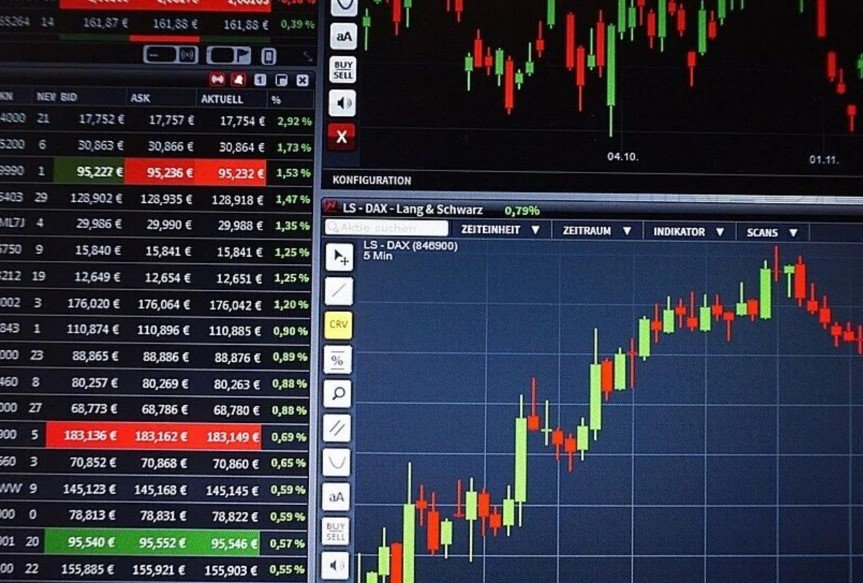Indian stocks set for higher open as global sentiment lifts, but volatility from West Asia lingers in the background
Stocks in India looked ready to stage a comeback Wednesday morning after a shaky ceasefire between Israel and Iran showed signs of holding. Global markets steadied, crude prices slid, and early indicators pointed to a strong open for Sensex and Nifty. But behind the scenes, a big question remains: is the worst really over?
Overseas investors dumped more than ₹5,200 crore worth of Indian equities on Tuesday—their biggest exit in June so far—spooked by war headlines and potential oil supply jitters. As tensions temporarily ease, traders are watching levels and signals closely.
Nifty, Sensex Set to Open Higher on Global Tailwinds
At 7:40 a.m. IST, Gift Nifty futures were up by over 100 points, signaling a strong start to the trading day. That’s a sharp contrast to Tuesday’s session, which ended flat after a mid-day surge gave way to fresh geopolitical anxiety.
U.S. markets finished higher overnight. Dow Jones gained 0.5%, the S&P 500 rose 0.6%, and Nasdaq added 0.7%—all helped by a steep fall in oil prices and soft bond yields. That strength is trickling into Asia.
Brent crude futures slipped nearly 6% to trade at a two-week low of $80.37 a barrel, as Israel and Iran pulled back from the edge. Lower oil prices, especially when tensions flare in the Middle East, usually bode well for India, which imports over 80% of its crude needs.
Investors see this as breathing room—at least for now.

Foreign Investors Hit the Panic Button on Tuesday
Tuesday’s selloff by Foreign Institutional Investors (FIIs) sent a clear signal: this market is still highly reactive to geopolitical shocks.
According to NSE provisional data, FIIs sold ₹5,266 crore worth of Indian shares on June 24 alone.
That’s not a small dip—it was their biggest single-day exit in June.
One Mumbai-based trader who works with a U.S.-based hedge fund said, “We liked the valuation setup, but the Israel-Iran stuff scared the hell out of compliance. We had to cut.”
• FII net outflow (June 24): ₹5,266 crore
• Highest single-day outflow for June so far
• Sectoral focus of selling: Financials, energy, and infra stocks
While retail and domestic institutional investors tried to prop up the market, the impact of the FII exodus was evident in the day’s choppy price action.
Key Technical Levels and What Traders Are Watching
Market strategists are now scanning technical charts with a magnifying glass.
Here’s what they’re focusing on for June 25:
| Index | Support | Resistance |
|---|---|---|
| Nifty 50 | 24,920 | 25,300 |
| Sensex | 82,100 | 83,600 |
| Bank Nifty | 54,200 | 55,000 |
Nifty bounced back from the 24,920 support level on Tuesday, a crucial floor that has held firm in recent sessions. A decisive break above 25,300 could open up a fresh rally zone, say analysts.
Meanwhile, the India VIX—the volatility index—remains subdued. It’s still hovering under the 15 mark, suggesting that despite the fireworks in West Asia, traders are not pricing in major domestic disruption yet.
Sectors Likely to React Today
Not every part of the market will move the same way. Analysts expect sharp sector-specific action.
Here’s what’s on their radar:
-
Oil and gas stocks might face some pressure as crude eases.
-
Defence-related stocks, which ran up over the past two weeks, could cool down.
-
IT and pharma are likely to benefit from rupee stability and strong U.S. cues.
-
Banking stocks could rebound if FII pressure eases.
One surprising gainer Tuesday was PSU energy major ONGC, which held steady despite oil volatility. That kind of resilience could signal bargain-hunting by local funds.
What’s Driving Market Mood Beneath the Surface?
It’s not just missiles and oil prices.
Back in India, inflation prints have remained mostly under control. RBI minutes from the last policy meeting show a central bank that’s more cautious than hawkish, offering support to equity markets.
Also, monsoon coverage has improved in June after a dry May. That’s easing worries about food inflation and rural demand slumps.
Still, the elephant in the room remains international. A single drone strike in Tehran or Tel Aviv could send sentiment tumbling again. Traders know this—and they’re acting accordingly.
Just ask the currency markets. The rupee stayed flat around 83.48 per dollar on Tuesday despite all the noise. That’s partly because the Reserve Bank of India is said to be quietly intervening to prevent wild swings.
Outlook for the Week: It’s All About Staying Nimble
What does the rest of the week look like?
One equity strategist at a large domestic brokerage summed it up this way: “If crude stays below $82 and Iran keeps quiet, the bulls will charge. But this is not a market where you go all-in.”
Sentiment could change quickly. But as of Wednesday morning, traders are waking up to green on the screen and a little less fear in the air.
Still, it’s early. And as we’ve seen, the Middle East has a nasty habit of stealing the show.
